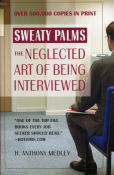| What REALLY goes on in a job interview? Find out in the new revision of "Sweaty Palms: The Neglected Art of Being Interviewed" by Tony Medley, updated for the world of the Internet . Over 500,000 copies in print and the only book on the job interview written by an experienced interviewer, one who has conducted thousands of interviews. This is the truth, not the ivory tower speculations of those who write but have no actual experience. "One of the top five books every job seeker should read," says Hotjobs.com. Click the book to order. Now also available on Kindle. | |
|
Woman in Gold (9/10) by Tony Medley Runtime 110 minutes. OK for children. If I had to pick the best actor in the movie business today I wouldn’t have to think twice. Helen Mirren would win, hands down. Here she plays Maria Altmann, who was born in Vienna in 1916. This was nine years after Gustav Klimt had painted a gorgeous masterpiece in gold of Maria’s mother’s sister, Adele. Years later, after Hitler’s Anschluss made Austria part of the Third Reich, Jews were rounded up and sent to concentration camps and their businesses and residences confiscated. Included in this confiscation was the Klimt masterpiece and lots of other works of art that Maria’s parents had collected in their opulent Viennese apartment. This movie, directed by Simon Curtis from a script by Alexi K. Campbell, introduces Maria living in the United States in 1998. She hires Randy Schoenburg (Ryan Reynolds), grandson of world famous composer Arnold Schoenberg, and a family friend, to challenge the Austrian government’s claims to the Klimt paintings. Thus begins an ordeal that has Maria and young Randy fighting not only the Austrian government, but the American government as well. This is a brilliant movie telling the story with many flashbacks to Vienna in 1938 (young Maria is well played by Tatiana Maslany, who truly looks like a young Helen Mirren) that includes enticing cinematography of the Austrian locations and some nasty business with the Nazis. In addition to the fine performances by Mirren, Reynolds, and Maslany, there are good supporting performances by Daniel Brühl as Hubertus Czerin, a helpful Austrian investigative journalist who became the prime mover in the case, and Katie Holmes in a small but effective role as Randy’s wife, Pam. The movie portrays Maria as the owner of a small shop without a lot of money. I don’t know how well off the real Maria was, but her brother-in-law was Bernhard Altmann, a world famous clothier. In real life, Maria's husband, Frederick, was imprisoned in Dachau by the Nazis and held for ransom until Bernhard, safely in France, transferred his lucrative textile mill to the Nazis. It was after Frederick was released that he and Maria made their harrowing escape. After she arrived in Los Angeles Bernhard sent her a cashmere sweater with the note, “see what you can do with this.” This was, apparently, the first cashmere sweater in the United States. She sold it to Kerr’s in Beverly Hills. It was so popular that she started a successful clothing business importing cashmere sweaters under the Altmann name. One of her customers was Spencer Tracy’s mother. None of this is mentioned in the movie, which pictures her merely as the proprietor of her own small clothing store. The scene in the U.S. Supreme Court has Maria sitting next to Randy like in a trial court. When I was in the Supreme Court clients were not seated at a table with their attorneys. But maybe they had to film it this way to get Mirren in the scene. For Los Angelenos paying attention some of the segues for the Los Angeles locations will be a little jarring. Just as an example, there is a scene of Randy driving through downtown Los Angeles to a job interview, but then there’s a stock shot of the building in which the interview takes place and it is located in Century City 8-10 miles west of downtown. Didn’t they have a stock shot of a building in downtown Los Angeles where they show Randy is driving? But this is a movie and probably nobody else will notice the dichotomy. My minor criticisms are trivial. I was, frankly, enthralled throughout. My audience of critics (which included director Curtis who arrived unobtrusively and sat in the back row unnoticed until my friend, Sheila Roberts, another critic, recognized him as we left the small screening room on Rodeo Drive in Beverly Hills) applauded, which is unusual.
|
|
|
|
|
